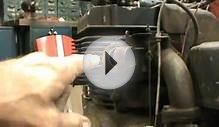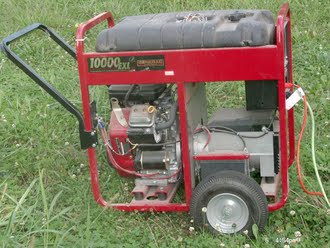
Travis D. Husaboe, Marc D. Polanka, Joshua A. Rittenhouse, Paul J. Litke, and John L. Hoke. ", No. 5 (2014), pp. 1328-1333.
Travis D. HusaboeMarc D. PolankaJoshua A. Rittenhouse
Aeronautical Engineering, Air Force Institute of Technology, Wright–Patterson Air Force Base, Ohio 45433
Paul J. LitkeAir Force Research Laboratory, Wright–Patterson Air Force Base, Ohio 45433
John L. HokeInnovative Scientific Solutions Inc., Dayton, Ohio 45433
*Masters Student, Aeronautical Engineering. Student Member AIAA.
†Associate Professor, Aeronautical Engineering. Associate Fellow AIAA.
‡Senior Research Engineer. Senior Member AIAA.
§Senior Research Engineer. Associate Fellow AIAA.
This material is declared a work of the U.S. Government and is not subject to copyright protection in the United States. Copies of this paper may be made for personal or internal use, on condition that the copier pay the $10.00 per-copy fee to the Copyright Clearance Center, Inc., 222 Rosewood Drive, Danvers, MA 01923; include the code 1533-3876/14 and $10.00 in correspondence with the CCC.The effects of atmospheric pressure and temperature variations on the performance of small internal combustion engines operating at altitudes significantly above sea level are not widely documented. Most small internal combustion engines are designed and manufactured for ground-based applications such as chainsaws and lawn mowers. However, these engines are finding application as power sources for remotely piloted aircraft for both hobbyist and military applications. A test stand with the capability to control atmospheric conditions was developed for representative small internal combustion engines. During previous research, data were recorded to identify the impact of varying engine intake pressure on engine performance both with a carburetor and with a throttle body fuel-injection system delivering a gasoline–oil mixture. Using the stand and fuel-injection system, data were collected while varying air temperature along with pressure. Results revealed a decrease in performance (power and brake mean effective pressure) of nominally 4% per 300 m of elevation due to pressure, while improvements of 1% per 300 m were due to temperature effects. This resulted in a nominal 3% loss per 300 m of altitude. These data were then used to establish an updated correction factor for power due to altitude changes. A speed-dependent model was validated for this small engine. These measurements provide a better understanding of small internal combustion engines operation at altitude. Quantifying these effects is vital for establishing the capability of operating spark-ignition engines at altitudes well above those for which they were designed.
RELATED VIDEO




 In radio-controlled modeling, a model engine is an internal combustion engine used to power a radio-controlled aircraft, radio-controlled car, radio-controlled boat, free flight and control line aircraft, and tether car models also use these engines. Because of the...
In radio-controlled modeling, a model engine is an internal combustion engine used to power a radio-controlled aircraft, radio-controlled car, radio-controlled boat, free flight and control line aircraft, and tether car models also use these engines. Because of the...
 A small engine is the general term for a wide range of internal combustion engines used to power lawn mowers, generators, concrete mixers and many other machines that require independent power sources. Most small engines are single-cylinder, V-twin, or flat-twin...
A small engine is the general term for a wide range of internal combustion engines used to power lawn mowers, generators, concrete mixers and many other machines that require independent power sources. Most small engines are single-cylinder, V-twin, or flat-twin...








